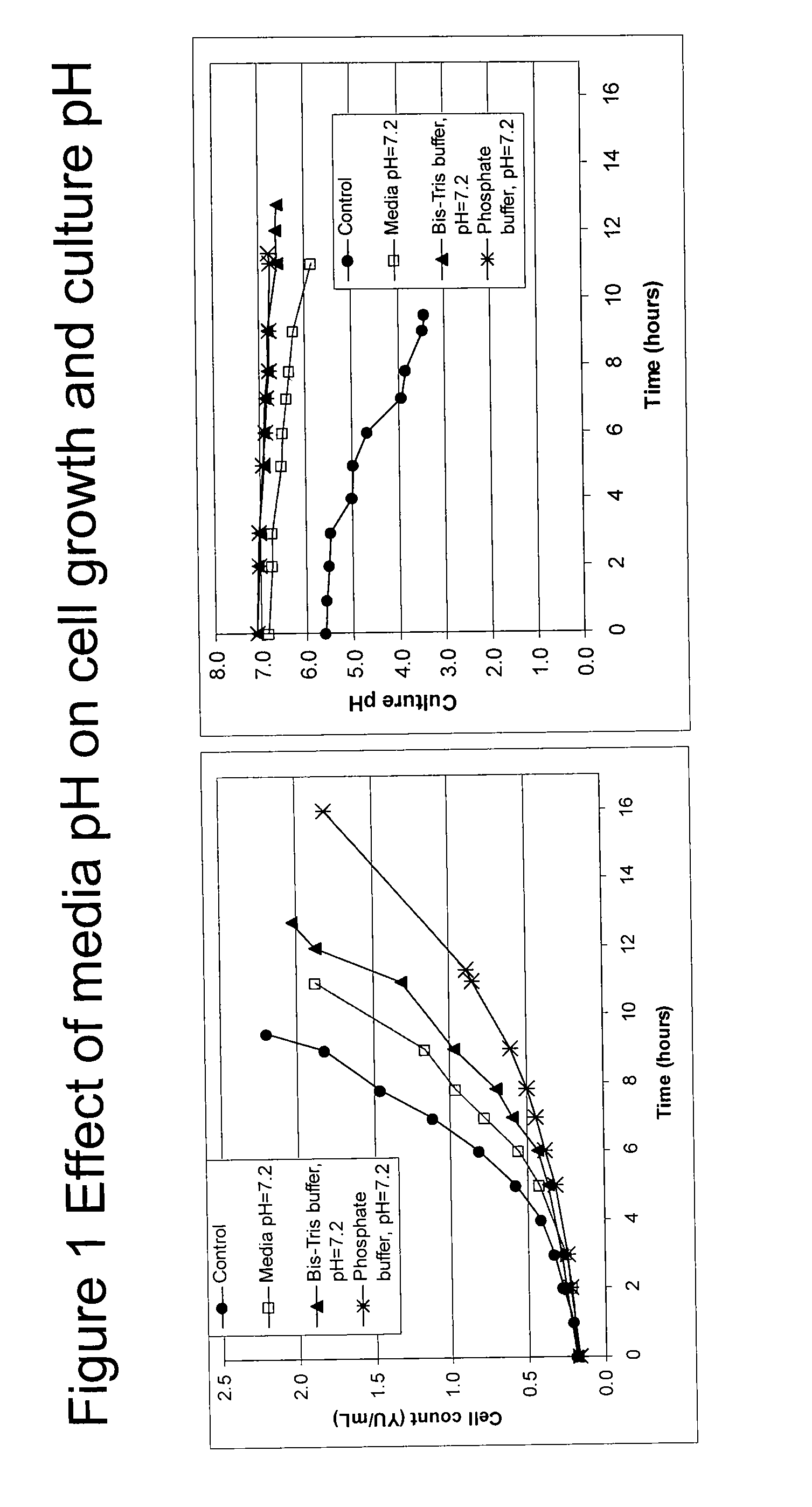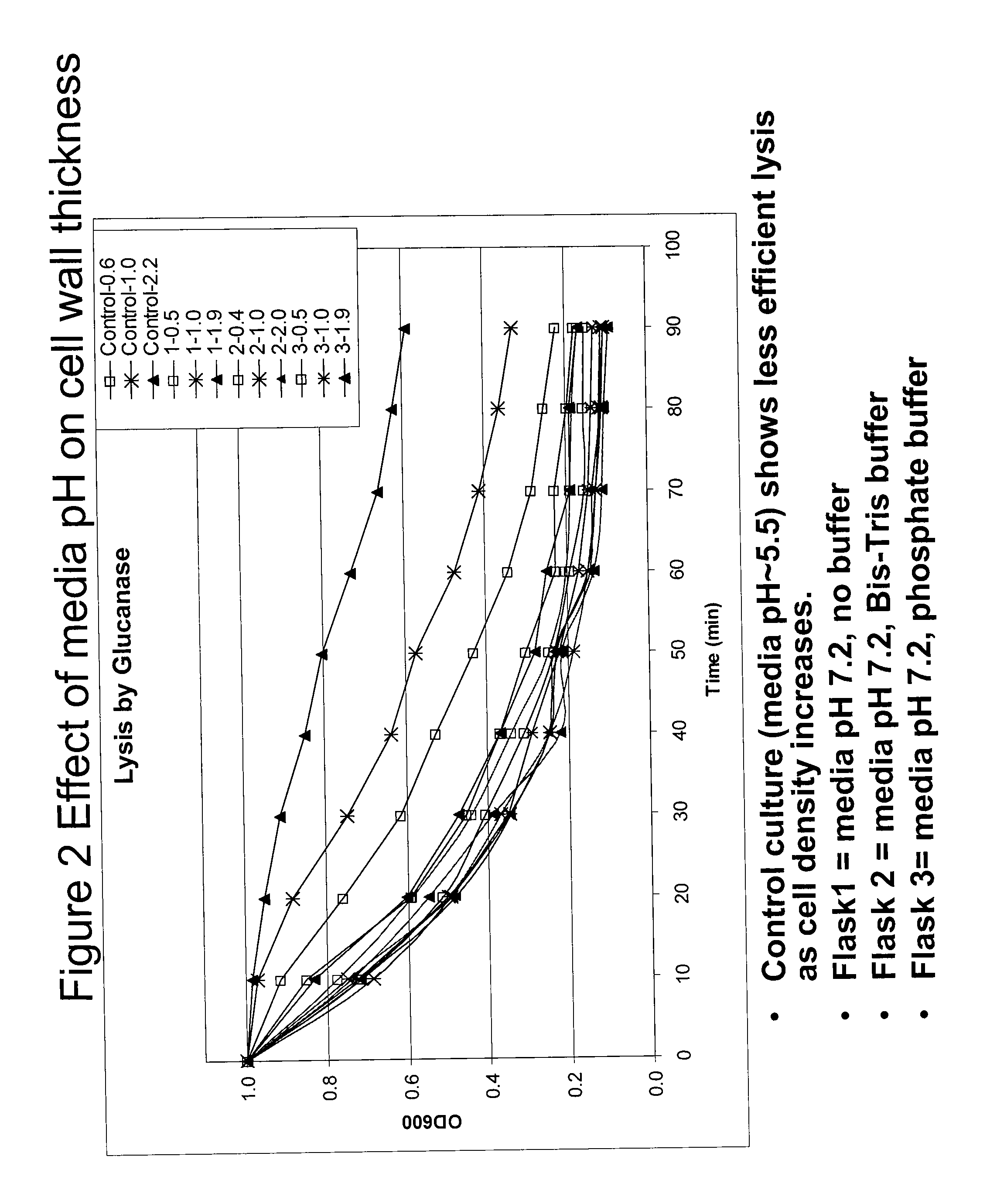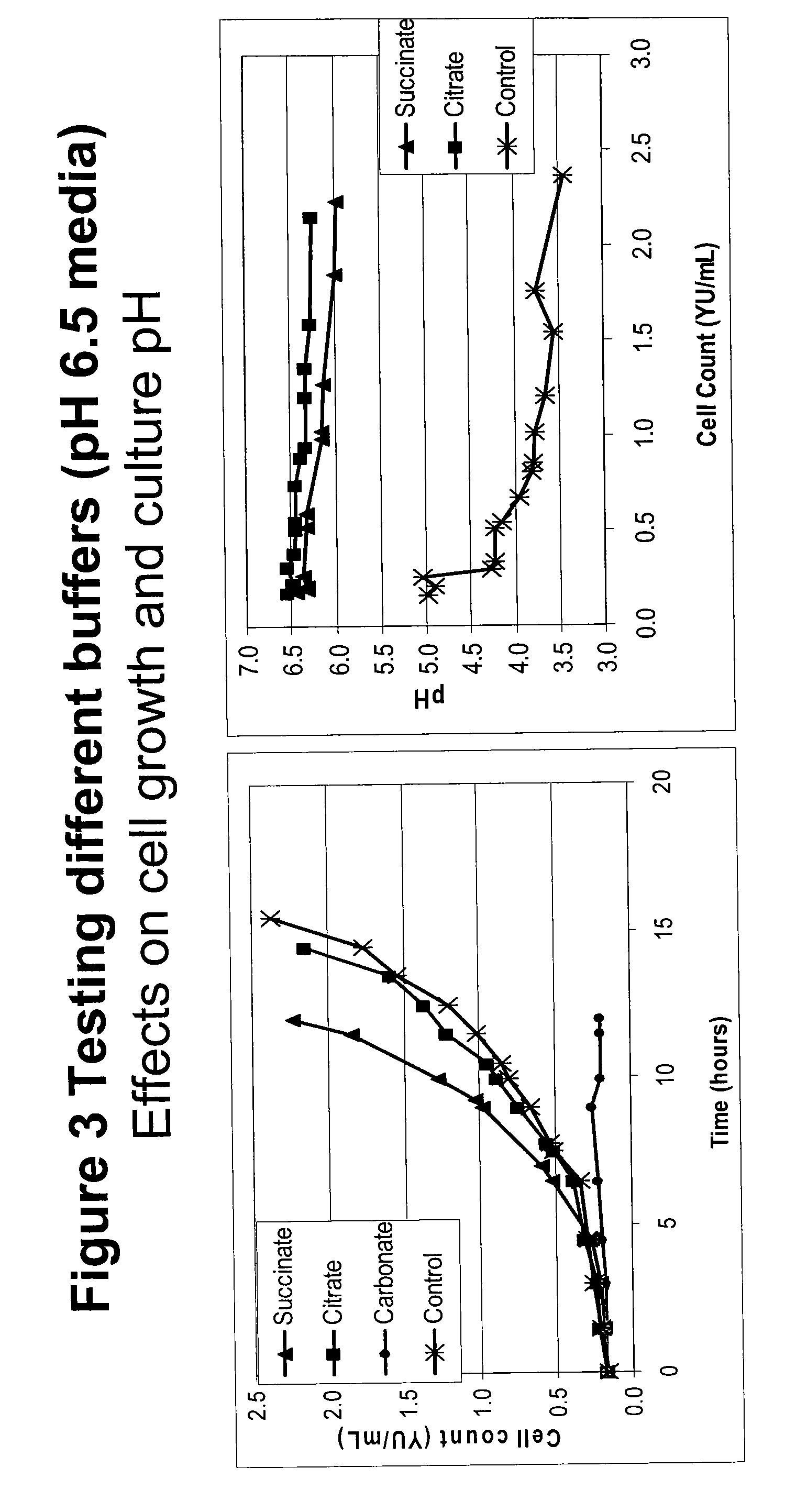Methods for producing yeast-based vaccines
a technology of yeast-based vaccines and methods, which is applied in the direction of antibody medical ingredients, drug compositions, immunological disorders, etc., can solve the problems of failure to elicit protective cellular immunity, disappointing subunit vaccine development, and failure to achieve protective cellular immunity, so as to slow down the doubling time, the negative effect of doubling time and good growth of yeas
- Summary
- Abstract
- Description
- Claims
- Application Information
AI Technical Summary
Benefits of technology
Problems solved by technology
Method used
Image
Examples
example 1
Yeast Media Formulations
[0052]Various types of media can be used to culture yeast and be adjusted such that the pH level is neutral. Several examples of media which can be used are given below, however, it is to be understood that the invention is not limited to the use of these media components or media protocols.
[0053]One standard media recipe is ULDM media which is as follows:
Componentg / L20 LSourceYNB w / o ammonium1.734.0Difco 233520sulfate and aminoacidsAmmonium sulfate5.0100.0EMD AX13853ORYNB w / o amino acids6.7134.0DifcoAdenine0.020.4Sigma A9795Tryptophan0.020.4JTBaker 2092Histidine0.020.4JTBaker N327Glucose monohydrate25.0500.0EMD 1.08342.2500
[0054]Another standard media recipe is UL2 media which is as follows:
Componentg / L20 LSourceYNB w / o ammonium1.734.0Difco 233520sulfate and aminoacidsAmmonium sulfate5.0100.0EMD AX13853ORYNB w / o amino acids6.7134.0DifcoAdenine0.40.8Sigma A9795Tryptophan0.40.8JTBaker 2092Histidine0.40.8JTBaker N327Glucose monohydrate15.0300.0EMD 1.08342.2500
[...
example 2
Effect of Media pH on Cell Growth and Culture pH
[0072]The effect of media pH on cell growth and culture pH were tested, as shown in FIG. 1. Cells were grown in U2 media supplemented with Bis-Tris buffer, pH 7.2 or phosphate buffer, pH 7.2. Control cultures were gown in U2 media without buffer added to the media. For conditions marked as control (same as media pH 5.5) or media pH 7.2, the growth media for these controls was either adjusted to pH 5.5 or pH 7.2 with base (NaOH) prior to inoculating with the yeast. The cultures were incubated at 30° C. and monitored for cell count and culture pH for up to 16 hours. The results indicate that buffers at varying pH levels affected growth rates of the yeast. As shown in FIG. 1, the doubling times ranged from 2.8 to 4.5 hours. The pH in unbuffered pH 7 media was ˜5.5 at 2.0 YU / mL, which indicates the need for some form of buffering agent to keep the pH at a neutral level.
example 3
Effect of media pH on Cell Wall Thickness
[0073]The effect of media pH was tested to determine if it had any effect on cell wall thickness. Growth media and conditions were the same as in Example 1. Cultures were harvested at densities ranging from 0.5 to 2.0 YU / mL. In the legend for FIG. 2, the density when the cultures were harvested is listed as the number following the dash mark, e.g. control-0.6 means cells grown in unbuffered media at pH 5.5, then harvested when cells reached 0.6 YU / mL density. The conditions for flasks 1-3 (e.g. 1-0.5, 2-2.0 or 3-1.0) are listed below the figure and the cell density at harvest is marked in the legend. The lysis assay protocol used was as follows: (1) re-suspend 10YU of washed cells in 1 mL of Tris-BME; (2) pull a “Time 0” sample and measure the OD at 600 nm; (3) add 20 U of glucanase; (4) rotate at 30° C.; (5) every 10 minutes, take a sample and measure the OD.
[0074]As can be observed in FIG. 2, the control culture (media pH˜5.5) shows less ef...
PUM
| Property | Measurement | Unit |
|---|---|---|
| pH | aaaaa | aaaaa |
| pH | aaaaa | aaaaa |
| pH | aaaaa | aaaaa |
Abstract
Description
Claims
Application Information
 Login to View More
Login to View More - R&D
- Intellectual Property
- Life Sciences
- Materials
- Tech Scout
- Unparalleled Data Quality
- Higher Quality Content
- 60% Fewer Hallucinations
Browse by: Latest US Patents, China's latest patents, Technical Efficacy Thesaurus, Application Domain, Technology Topic, Popular Technical Reports.
© 2025 PatSnap. All rights reserved.Legal|Privacy policy|Modern Slavery Act Transparency Statement|Sitemap|About US| Contact US: help@patsnap.com



